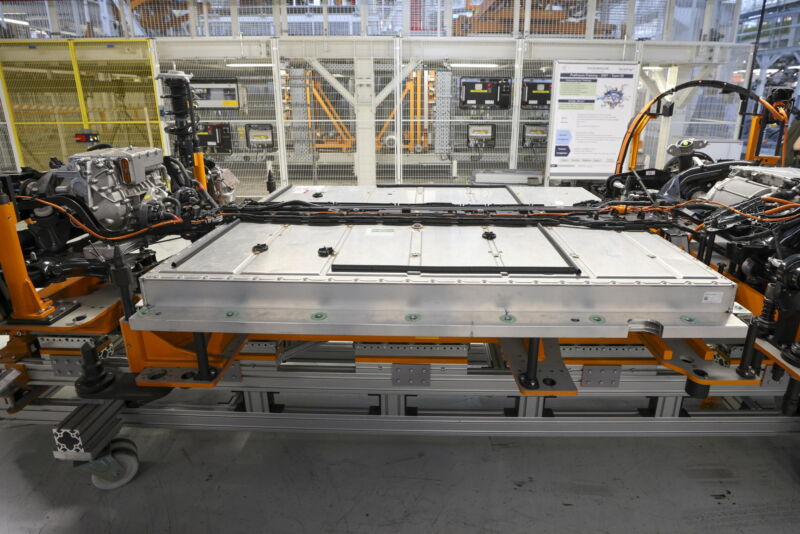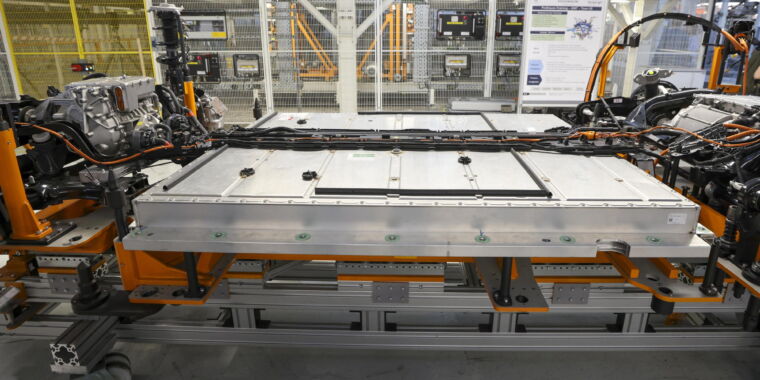
Lithium-ion battery fires can be intense and terrifying. As someone who fixes used smartphones, I’ve put out my share of iPhone fires with leaky lithium-ion batteries. And the type of smartphone battery in your pocket is similar to what’s in electric vehicles. Except the EV battery stores a lot more energy—so much energy that some firefighters receive special training to extinguish the extra-intense EV flames that erupt from EV battery fires after traffic accidents.
If you’ve been reading the news about electric vehicles, you’ve probably come across a lot of scary stories about battery fires on the rise. Recently, the National Transportation Safety Board and the California Highway Patrol announced that they are investigating a fire in a Tesla truck that started after the vehicle crashed into a tree. The lithium-ion battery burned for about four hours.

Does this mean you should worry about your personal electric vehicle as a potential fire hazard? Not really. It makes more sense to worry about a gas-powered vehicle going up in flames than an electric vehicle, since electric vehicles are less likely to catch fire than their more traditional transportation counterparts.
“Fires from manufacturing defects in the battery are really, really rare,” said Matthew McDowell, a co-director of Georgia Tech’s Advanced Battery Center. “Especially in electric vehicles, because they also have battery management systems.” The software monitors the various cells that make up an EV’s battery and can help prevent the battery from being pushed beyond its limits.
How do fires start in electric vehicles?
During a crash that damages the EV battery, a fire can occur due to what’s called thermal runaway. EV batteries aren’t one solid brick. Rather, think of them as a collection of many smaller batteries, called cells, that are pressed together. Thermal runaway occurs when a chemical reaction in one of the cells initially causes a fire, and the heat quickly spreads to every adjacent cell until the entire EV battery is consumed.
Greg Less, director of the University of Michigan’s Battery Lab, divides EV battery fires into two distinct categories: accidents and manufacturing defects. He considers accidents to include anything from a collision that punctures the battery to a charging accident. “Let’s take that off the table,” Less says. “Because I think people understand that no matter what type of vehicle it is, if you’re in an accident, there’s a risk of fire.”
While all EV battery fires are difficult to extinguish, fires caused by manufacturing defects are likely to be of more concern to consumers because they can be seemingly random. (Think back to when all those Samsung phones had to be recalled because battery issues posed a fire hazard.) How can these rare problems with EV battery manufacturing cause fires at what might seem like random times?
It all comes down to how the batteries are designed. “There’s some level of engineering that went wrong and caused the cell to short out, which then starts generating heat,” Less says. “Heat causes the liquid electrolyte to vaporize, which creates a gas inside the cell. When the heat gets high enough, it ignites, explodes, and then spreads to other cells.” These types of defects are likely the cause of the much-publicized recent EV fires in South Korea, one of which damaged more than 100 vehicles in a parking lot.
How to respond if your electric car catches fire
According to the National Fire Prevention Agency, if an EV ever catches fire while you’re behind the wheel, you should immediately find a safe way to pull over and get the car off the main road. Then, turn off the engine and have everyone get out of the vehicle immediately. Don’t delay by grabbing personal belongings; just get out. Stay more than 100 feet away from the burning car while you call 911 and request emergency services.
Also, do not attempt to extinguish the flame yourself. This is a chemical fire, so a few buckets of water will not adequately extinguish the flames. Fires in electric vehicles can cost emergency responders about 10 times more water to extinguish than a fire in a gasoline-powered vehicle. Sometimes, firefighters decide to simply let the battery burn out instead of extinguishing it with water.
Once an EV battery does catch fire, it’s possible for the chemical fire to reignite after the initial combustion has stopped. It’s even possible for the battery to flare up again days later. “Both firefighters and emergency responders, such as vehicle recovery companies or towing companies, should also be aware of the potential for stranded energy that could remain in undamaged portions of the battery,” Thomas Barth, a research scientist and biomechanical engineer for the NTSB, said in an emailed statement. “This energy could pose a shock risk or cause the vehicle to re-ignite.”
While it may be tempting to get back in your car and grab your wallet or other important items if the flame diminishes or goes out for a moment, resist the temptation. Wait for your local fire department to arrive to assess the overall situation and give you the all-clear. Staying far away from your car will also minimize your chances of inhaling any unhealthy fumes from the battery fire.
How can EV batteries become safer?
In addition to rapid recalls and replacements of potentially defective lithium-ion batteries, both researchers I spoke with were excited about future possibilities for another type of battery, called solid-state, to make electric vehicles even more reliable. “These batteries could potentially have greater thermal stability than lithium-ion batteries,” McDowell said. “When it gets a lot warmer, it might just stay fairly stable.” With a solid-state battery, the liquid electrolyte is no longer part of the battery cells, eliminating the most flammable aspect of battery design.
These solid-state batteries are already available in some smaller electronic devices, but producing large versions of the batteries on a large scale remains a hurdle that electric vehicle manufacturers are working to overcome.
This story originally appeared on wired.com.

